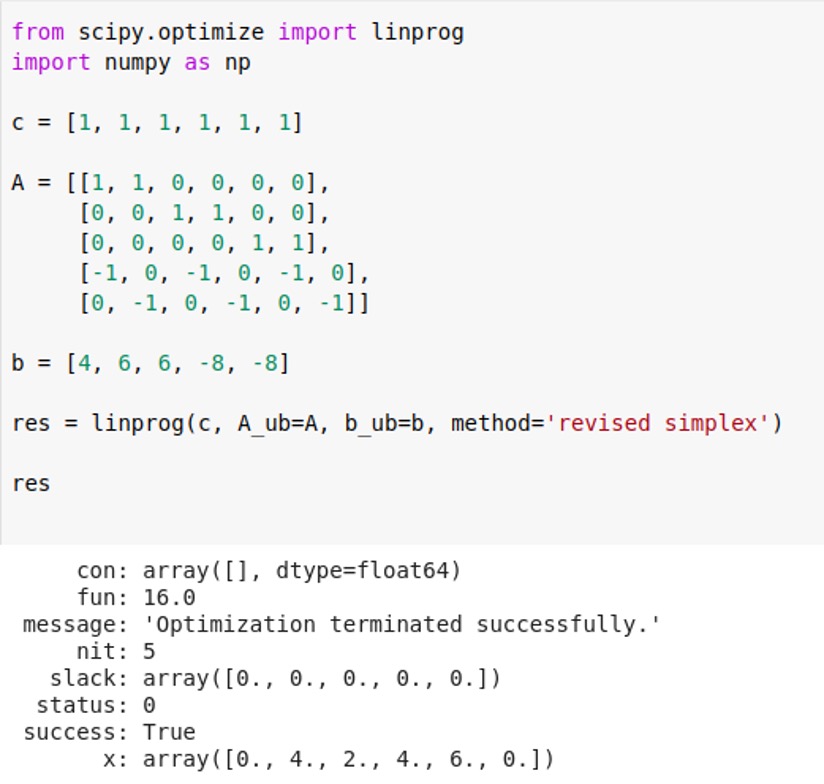
That is, leastsq will (normally) include and estimate of the 1-sigma errors as well as the solution.

One approach to this common problem is to use after using minimize with 'L-BFGS-B' starting from the solution found with 'L-BFGS-B'.

Finally, I've added the default value of ftol, but if you change it in an argument to minimize, you would obviously need to change it here. But for large numbers of variables, I've found that to be a much slower option.
Scipy optimize minimize full#
Also, for small problems, you can just use np.diag(res.hess_inv.todense()) to get the full inverse and extract the diagonal all at once. The iteration stops when (f^k - f^ are basically just the same as the final output value, res.fun, which really ought to be a good approximation.
Scipy optimize minimize how to#
See the snippet at the end of this answer that shows how to do it directly, without resorting to calling additional minimization routines. I don't have a short repro, and even if I did, it wouldn't be helpful, since I have been unable to reproduce this even after quite a few attempts (RNG seems friendly to me).TL DR: You can actually place an upper bound on how precisely the minimization routine has found the optimal values of your parameters. If res.x is within bounds (as it should be), this should never fail. In my case, what I'm doing is using res = minimize(f1, x0, bounds=*n), followed by minimize(f2, res.x, bounds=*n) that is, using the result of one optimization as the initial guess for another one with the same bounds. Raise ValueError("`x0` violates bound constraints.") Self.g = approx_derivative(fun_wrapped, self.x, f0=self.f,įile "lib\site-packages\scipy\optimize\_numdiff.py", line 451, in approx_derivative Return _minimize_lbfgsb(fun, x0, args, jac, bounds,įile "lib\site-packages\scipy\optimize\lbfgsb.py", line 360, in _minimize_lbfgsbįile "lib\site-packages\scipy\optimize\_differentiable_functions.py", line 261, in fun_and_gradįile "lib\site-packages\scipy\optimize\_differentiable_functions.py", line 231, in _update_gradįile "lib\site-packages\scipy\optimize\_differentiable_functions.py", line 151, in update_grad It probably wouldn't work if the lower and upper bound are equal.įile "lib\site-packages\scipy\optimize\_minimize.py", line 619, in minimize The changes I'm making as part of 10673 (I've done LBFGSB, TNC, CG, BFGS) will prevent finite difference calculation going outside the bounds, so long as the guess obeys the bounds. Thankfully this issue made me look more closely and realise the mistake I was making. I thought that this was the fault of the fortan optimizer loop, but it wasn't. This can be avoided by clipping the initial guess. If the initial guess is outside the bounds then there is an error raised.
Scipy optimize minimize code#
The code I've introduced involves creation of a ScalarFunction object, and as part of the construction it evaluates the function and gradient with the initial guesses. In #10673 I thought I had come across such an example. might affect convergence), we could try the simple thing of rounding candidate points to lie within bounds (and if necessary doing one-sided derivative In your example, how far outside the bounds is 'L-BFGS-B' asking for the gradient to be evaluated? Considerably so, or is it within some sort of reasonable tolerance? Can you post that example? So if possible, would you be in favor of trying to add a keep_feasible option to L-BFGS-B and others? While it might not work well for every algorithm (e.g. There should be zero tolerance for a solution not obeying box bounds. This is a simple lower/upper bound check. So perhaps the authors intended to stay strictly within bounds? I wrote a test to try to observe this sort of behavior, but even with an initial guess outside the bounds, every solver (except trust-constr with keep_feasible=False) brought the guess within bounds before evaluating the function.

I've been looking for an example like that for #4916. In your example, how far outside the bounds is 'L-BFGS-B' asking for the gradient to be evaluated? Considerably so, or is it within some sort of reasonable tolerance? Can you post that example?ĭo you know of any such examples for TNC or SLSQP?


 0 kommentar(er)
0 kommentar(er)
